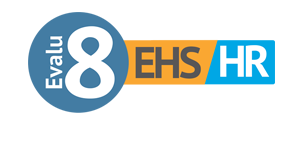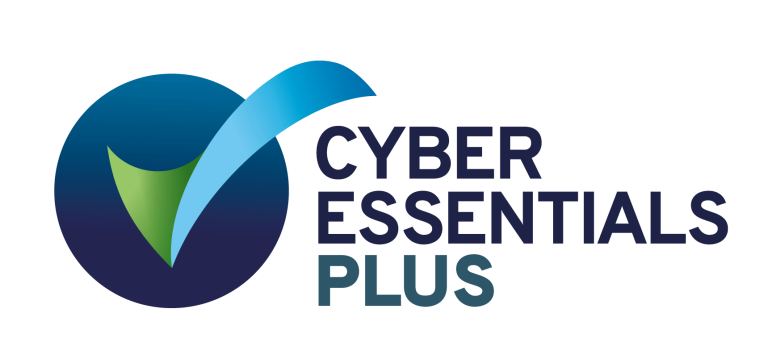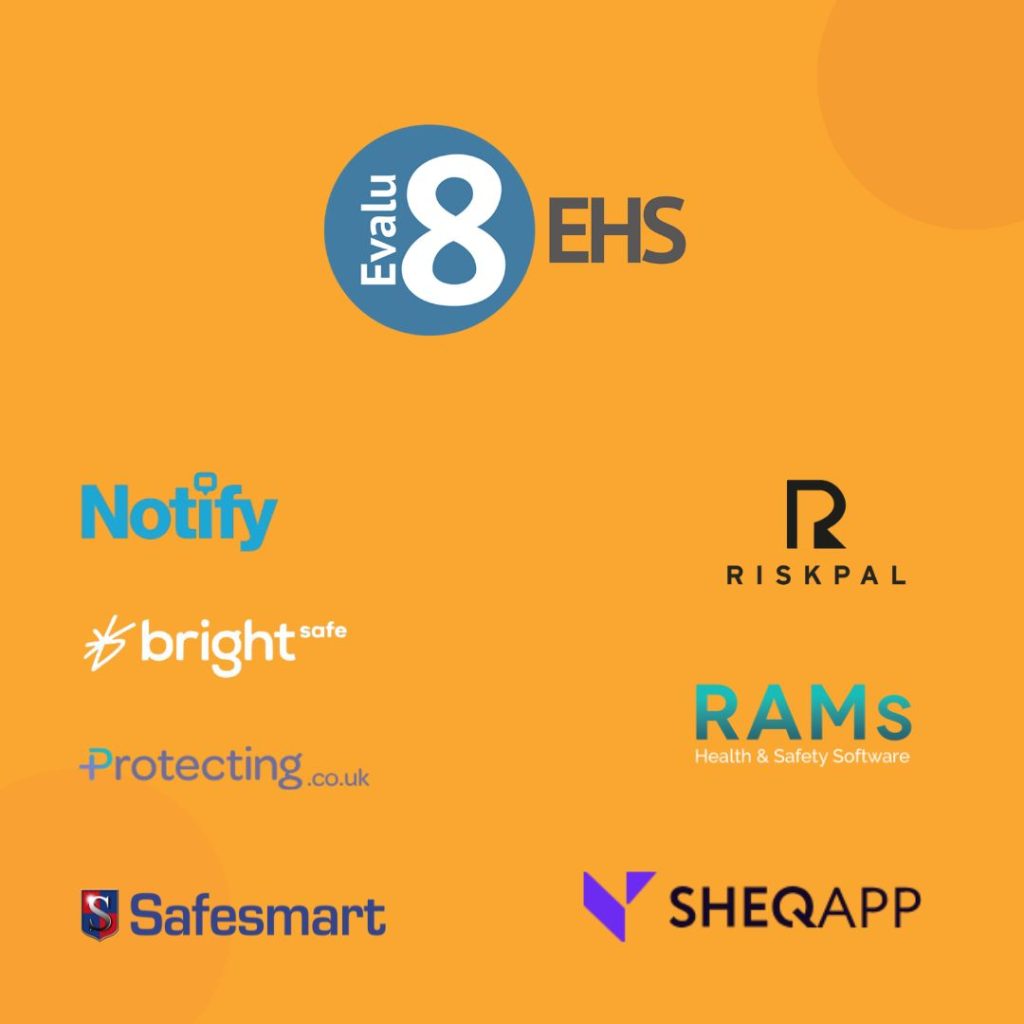
Why risk assessment software matters in 2025
Risk assessments are a legal requirement under UK Health and Safety law, ensuring businesses can identify, evaluate, and control workplace hazards effectively. The right Risk Assessment Software should:
- Simplify risk identification and evaluation
- Automate compliance and reporting
- Provide real-time monitoring of workplace risks
- Integrate with safety management systems
This guide highlights the top 8 risk assessment software solutions in 2025, comparing their features, limitations, and pricing to help businesses find the best fit for their needs.
Helpful summary
Overview: This article explores the 8 best risk assessment software solutions of 2025, comparing their features, pricing, and limitations. The right software can automate risk identification, streamline compliance, and enhance workplace safety.
Why trust us: Evalu-8 EHS is a comprehensive risk assessment and EHS platform designed for UK businesses, offering automated risk scoring, COSHH & RAMS integration, real-time compliance tracking, and mobile risk assessments all in one system.
Why it matters: UK businesses must conduct legally compliant risk assessments under the Health and Safety at Work Act (1974). Choosing the right software helps companies reduce workplace hazards, stay compliant, and prevent costly safety incidents.
Action points: Invest in a risk assessment solution that includes automated risk tracking, compliance integration, and real-time monitoring. Evalu-8 EHS offers all-in-one risk management with COSHH, RAMS, and dynamic risk updates, eliminating the need for multiple systems.
Further research: Learn how Evalu-8 EHS can transform risk management with automated risk scoring, real-time compliance alerts, and mobile-friendly assessments. Book a free demo today to see it in action!
Evalu-8 EHS- best all-in-one risk assessment software

Evalu-8 EHS is a modern, British-built platform designed to help organisations manage all aspects of health and safety in one place. It’s especially well-suited to small and mid-sized UK businesses looking to move away from spreadsheets, disconnected tools, and manual processes.
At the core of the system is a flexible and easy-to-use Risk Assessment builder that supports task-, role-, or site-specific assessments. What sets Evalu-8 apart is how risk assessments are integrated into a wider safety ecosystem, linking with incidents, COSHH, RAMS, training, and audits ensuring risk is not just documented, but actively managed.
Rather than forcing businesses to bolt on additional software or juggle multiple systems, Evalu-8 EHS keeps everything under one roof, reducing admin, improving oversight, and helping organisations meet their legal obligations with confidence.
Core features
Digital risk assessment builder: Create and edit unlimited risk assessments using an intuitive, guided process.
Pre-loaded hazard and control lists: Choose from suggested hazards and controls, or add your own to suit industry-specific risks.
Risk scoring (Before & after controls): Apply standard risk matrices to assess likelihood and severity both pre- and post-mitigation.
Custom templates: Build reusable templates tailored to your working environment or job types to save time and maintain consistency.
Document management: Attach photos, procedures, or evidence directly to risk assessments and store them securely in the system.
Review & approval logs: Assign review dates, responsibilities, and track versions and changes over time for full audit traceability.
See an example Risk Assessment
Advanced features
COSHH & risk linkage: Assessments can be linked directly to COSHH documents, ensuring substance risks are not overlooked.
RAMS integration: Pull completed risk assessments into RAMS documents automatically saving time and ensuring consistency.
Mobile access: Risk assessments can be viewed and acknowledged via tablet or mobile, ideal for use on-site or in the field.
Task and action tracking: Assign actions that arise from risk assessments and monitor completion through to close-out.
Version control & audit trail: Full history of changes, reviewers, and sign-offs helps support internal audits and regulatory inspections.
Explore Evalu-8 EHS risk assessments
What Customers Say About Evalu-8 EHS
"Fantastic! I was apprehensive of change, but when I looked at the content and what it could do, I was so impressed and excited to get the system up and running. The cost for the service is extremely competitive too, comparing it with our previous supplier and others across the UK."
Health and Safety Advisor in UK
"Very happy with our experience with Evalu-8 EHS, easy to upload documents, training details, etc for the RAMS."
Project Support in UK
Pricing
Evalu-8 EHS is designed to be accessible and scalable:
Core EHS platform starts at just £2.50 per user, per month.
You can bolt the Risk Assessment module onto core EHS for a flat fee of £95 per month. Request a quote.
Pros & cons
Pros
- Simple, fast, and compliant digital risk assessment builder
- Fully integrated with COSHH, incidents, training, and RAMS
- No duplication, manage all safety data in one place
- UK-based support and development team
- Flexible pricing for SMEs and growing businesses
- Excellent audit trail and user accountability
Cons
- No live contractor access or portal (yet)
- POWRA tools and dynamic risk flags are in future development
- Field users currently rely on browser/mobile app rather than offline access
RAMS App
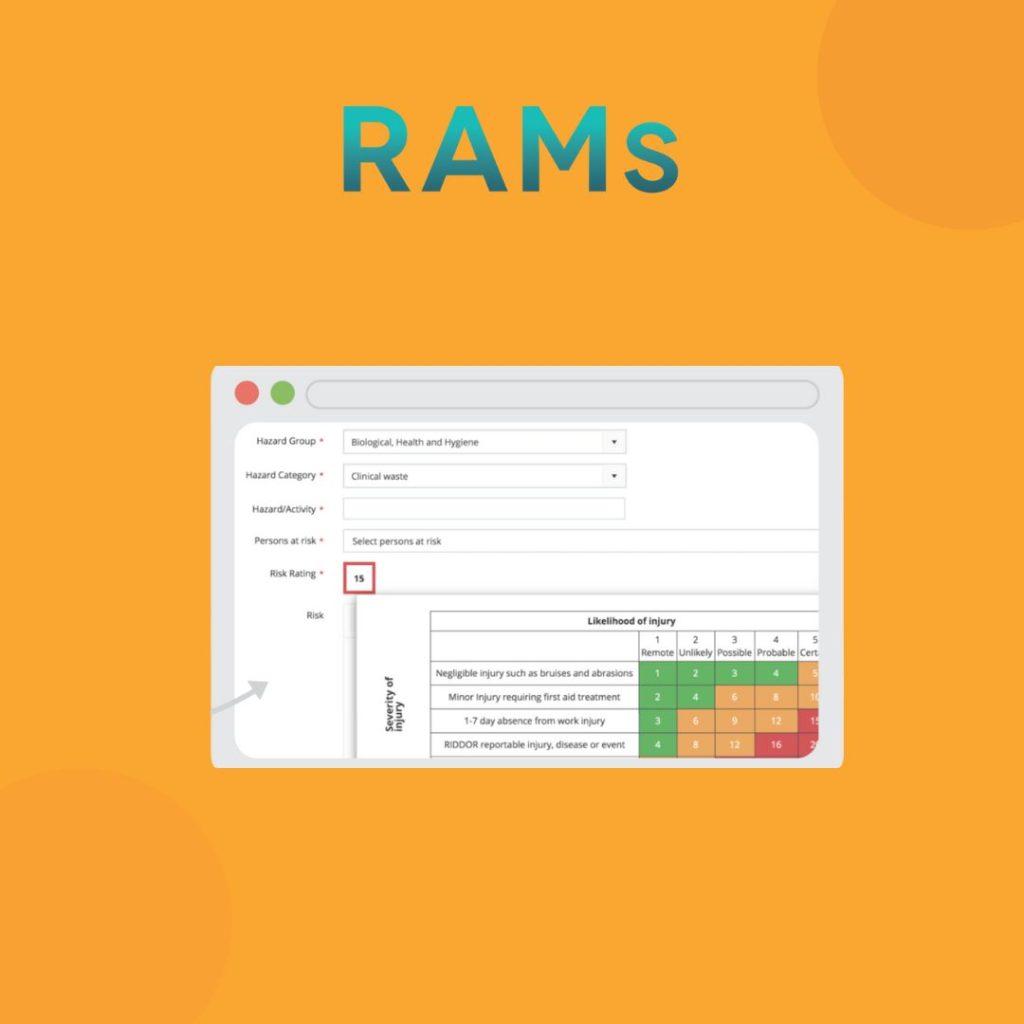
RAMS App is a cloud-based health and safety software designed to assist UK businesses in creating risk assessments, method statements, and COSHH assessments. While it offers a straightforward approach to document creation, it falls short as a comprehensive EHS (Environmental, Health, and Safety) platform. The software’s limited scope necessitates the use of additional tools to manage other health and safety activities, potentially leading to data silos and duplication. This fragmented approach can be particularly challenging for small and mid-sized enterprises (SMEs) seeking an all-in-one solution to streamline their EHS management.
Core features
Risk assessment creation: Provides pre-written content and templates to facilitate the development of risk assessments.
Method statement development: Offers ready-made method statements that can be edited to suit specific work activities.
COSHH assessments: Allows users to add their own assessments or choose from a library of pre-made COSHH assessments.
Advanced features
Toolbox talks and training matrix: Includes a library of toolbox talks and a training matrix to manage team training needs.
Constraints and functionality gaps
Despite its useful features, RAMs App exhibits several limitations:
Lack of real-time risk monitoring: The software does not support dynamic risk tracking, which is essential for proactive risk management.
Absence of automated compliance alerts: Users must manually monitor compliance deadlines, increasing the risk of oversight.
Limited integration capabilities: The standalone nature of the software may lead to data silos and duplication when used alongside other health and safety tools.
- No incident reporting integration: Lacks features for logging and managing incidents, necessitating additional software for comprehensive incident management.
Pricing
RAMs App offers several pricing tiers:
Starter: £20 per month for 1 RAMs document and 3 COSHH assessments.
Business: £25 per month for 3 RAMs documents and 9 COSHH assessments.
Unlimited: £35 per month for unlimited RAMs documents and COSHH assessments.
Multi-user: Custom pricing available upon request.
While the pricing is competitive, the costs can accumulate when additional software is required to fill the functionality gaps.
Pros & cons
Pros
- User-friendly interface: Simplifies the creation of risk assessments and method statements.
- Pre-written content: Offers a library of templates and assessments, saving time for users.
- Cloud-based access: Enables document access from any device with internet connectivity.
Cons
- Limited scope: Does not encompass the full spectrum of EHS management needs.
- Integration challenges: Standalone nature may lead to data silos and duplication when used alongside other tools.
- Manual compliance tracking: Lacks automated alerts for compliance deadlines, increasing administrative burden
SafeSmart
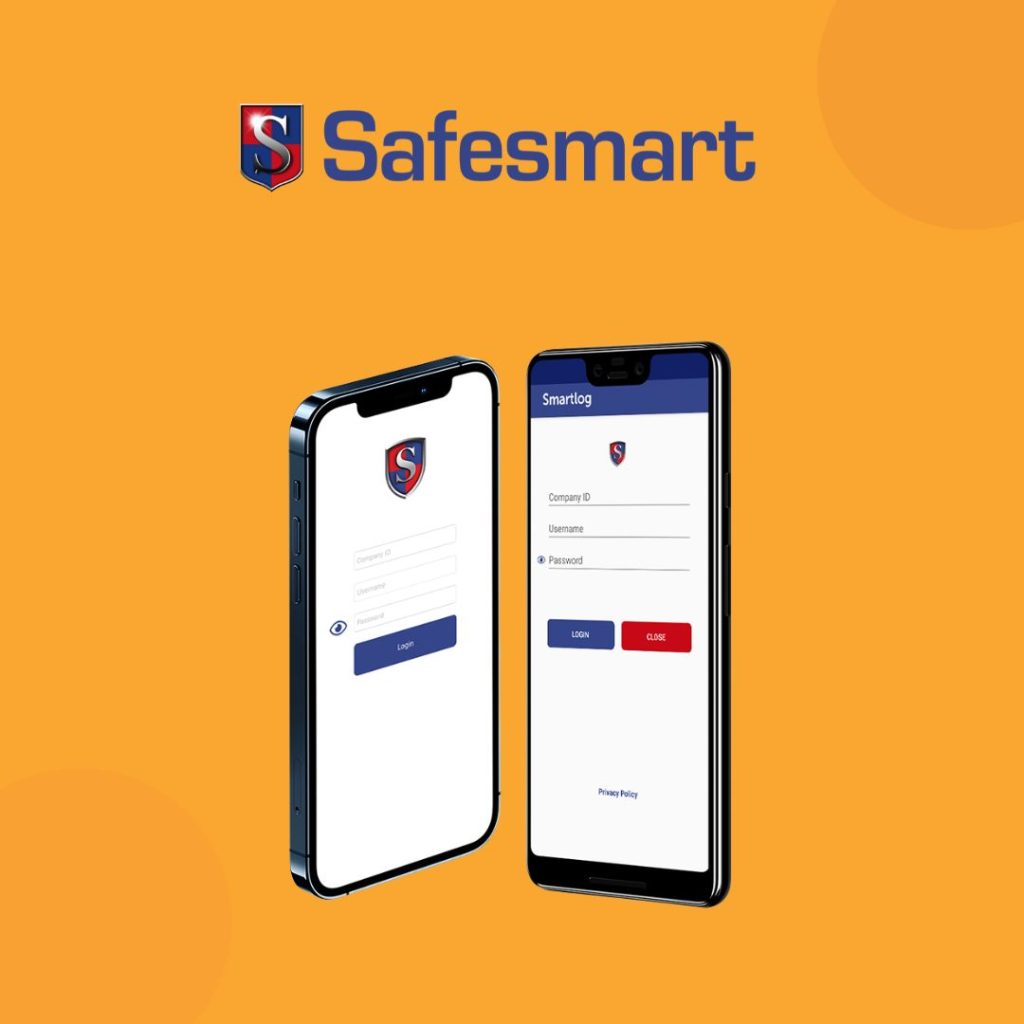
SafeSmart’s Smartlog platform is a cloud-based health and safety compliance management system utilised by over 8,000 sites and more than 300,000 active users. While it offers a range of features aimed at streamlining health and safety processes, its effectiveness as a comprehensive Environmental, Health, and Safety (EHS) platform for UK businesses, particularly small and mid-sized enterprises (SMEs), is questionable. The platform’s limitations may necessitate the integration of additional software to manage all aspects of EHS, potentially leading to data silos and duplication.
Core features
Risk assessment management: Smartlog provides a library of over 30 detailed and customisable risk assessment templates, including fire risk assessments, health and safety audits, and COSHH assessments. Users can create, edit, and share assessments within their organisation, with a full audit trail for accountability.
E-learning modules: The platform offers over 25 CPD-certified online training courses, allowing organisations to fulfil their training requirements. Features include branded downloadable certificates and unlimited user access.
Document library: Enables centralised management and distribution of policies and documents, with automated sharing and confirmation pass questions to ensure compliance.
Advanced features
Help desk: A ticketing system for raising, categorising, and assigning issues within the organisation, complete with priority levels and cost tracking.
Medical tracking: Facilitates the administration of medications and notifies carers when stock is low, including personalised medical profiles and Individual Health Care Plans (IHCP).
Constraints and functionality gaps
Despite its array of features, Smartlog exhibits several notable limitations:
Lack of automated risk scoring: The platform does not offer automated risk scoring, which is essential for prioritising risks effectively.
Absence of real-time risk monitoring: Smartlog lacks dynamic risk updates, meaning risk levels do not adjust automatically based on workplace changes, potentially leading to outdated assessments.
Limited mobile functionality: While there is an app available, its offline capabilities are restricted, which may hinder on-site risk assessments in areas with poor connectivity.
Integration challenges: The platform’s scope may not cover all aspects of EHS management, necessitating the use of additional software and risking data silos and duplication.
Pricing
Smartlog’s pricing starts at £750 per annum per location. While this may be feasible for larger organisations, SMEs might find the cost prohibitive, especially when considering the potential need for supplementary software to address functionality gaps.
Pros & cons
Pros
- Comprehensive template library: Offers a wide range of customisable risk assessment templates, facilitating compliance with UK regulations.
- Integrated E-learning: Provides CPD-certified courses, aiding in staff training and development.
- Centralised document management: Streamlines policy and document distribution within the organisation.
Cons
- No automated risk scoring: Lacks the ability to automatically prioritise risks, which is crucial for effective risk management.
- Static Risk Assessments: Does not support real-time updates to risk levels, potentially leading to outdated information.
- Limited mobile access: Offline functionality is constrained, which may impede field operations.
- Potential integration issues: May require additional software to achieve comprehensive EHS management, increasing complexity and cost.
Notify Technology

Notify Technology offers a digital Safety, Health, Environmental, and Quality (SHEQ) management system aimed at enhancing workplace safety and compliance for UK businesses. While it provides a suite of features designed to streamline health and safety processes, its effectiveness as a comprehensive Environmental, Health, and Safety (EHS) platform for small and mid-sized enterprises (SMEs) is debatable. The platform’s limitations may necessitate the integration of additional software to manage all aspects of EHS, potentially leading to data silos and duplication.
Core features
Risk assessment management: Notify allows users to create and manage risk assessments, offering customisable templates and a centralised repository for documentation.
Incident reporting: The platform enables real-time reporting of incidents, facilitating prompt responses and corrective actions.
Audit and inspection management: Users can schedule, conduct, and track audits and inspections, ensuring compliance with health and safety regulations.
Advanced features
Safety intelligence dashboards: Provides real-time visualisation of EHS data, aiding in the identification of trends and informed decision-making.
Mobile accessibility: Offers mobile applications for on-the-go access to EHS functions, allowing field workers to report incidents and conduct assessments remotely.
Constraints and functionality gaps
Despite its array of features, Notify Technology exhibits several notable limitations:
- Lack of automated risk scoring: The platform does not offer automated risk scoring, requiring manual evaluation of risk levels, which can be time-consuming and prone to human error.
- Integration challenges: While Notify offers various EHS functions, it may not encompass all aspects required by SMEs, leading to potential integration issues with other software solutions and risking data silos and duplication.
- Static risk assessments: Risk assessments do not update dynamically in response to changing workplace conditions, potentially leading to outdated evaluations and increased risk exposure.
- Limited environmental risk management: The platform’s focus is primarily on health and safety, with less emphasis on environmental risk factors, necessitating additional tools for comprehensive environmental risk management.
Pricing
Notify Technology does not publicly disclose its pricing structure, offering custom pricing based on the specific needs of a business. This lack of transparency can make it challenging for SMEs to assess affordability and compare with other solutions.
Pros & cons
Pros
- User-friendly interface: Designed with simplicity in mind, facilitating ease of use for employees at all levels.
- Comprehensive incident reporting: Enables real-time incident reporting, enhancing responsiveness to workplace incidents.
- Mobile accessibility: Supports mobile applications, allowing for remote access and reporting, which is beneficial for field workers.
Cons
- Manual risk scoring: Lacks automated risk scoring, necessitating manual assessments that can be inefficient and error-prone.
- Static risk assessments: Does not support dynamic updates to risk assessments, potentially leading to outdated and less effective risk management.
- Limited environmental focus: Offers minimal features for environmental risk management, requiring additional tools for comprehensive coverage.
- Integration issues: May not provide a fully integrated EHS solution, leading to potential data silos and duplication when used alongside other software.
RiskPal
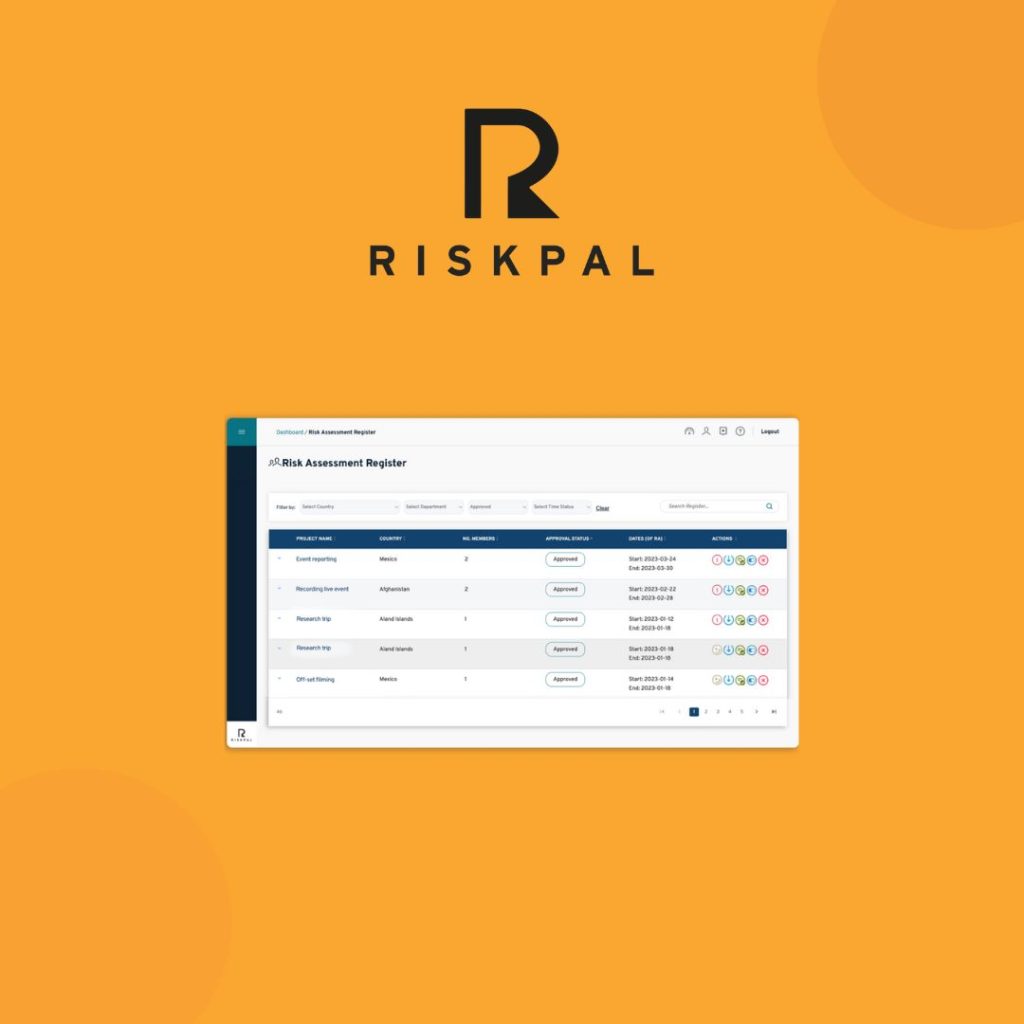
RiskPal is an online risk assessment platform designed to enhance the efficiency and professionalism of risk management processes for UK businesses. While it offers a user-friendly interface and customisable templates, its focus remains primarily on risk assessments. This limited scope may necessitate the integration of additional software to manage other Environmental, Health, and Safety (EHS) activities, potentially leading to data silos and duplication. For small and mid-sized enterprises (SMEs) seeking an all-encompassing EHS solution, this could present operational challenges.
Core features
Customisable risk assessment templates: RiskPal provides a library of expert safety advice and risk assessment templates that can be tailored to reflect specific business activities.
Activity risk guidance: The platform offers a centralised database of health, safety, and travel advice, allowing users to access and incorporate relevant guidance into their risk assessments.
Risk assessment register: RiskPal maintains a digital archive of all risk assessments, enabling users to easily store, search, and retrieve documents, thus providing oversight of all projects.
Advanced features
Risk matrix & residual risk scoring: The platform includes a risk assessment matrix to visually map out risks and assess residual risk scores, aiding in structured and consistent evaluations of likelihood and impact.
Country threat profiles: RiskPal offers country threat information and recent incident reports, which can be integrated into risk assessments for organisations with international operations.
Constraints and functionality gaps
Despite its strengths, RiskPal exhibits several limitations:
Limited scope beyond risk assessments: The platform’s primary focus is on risk assessments, lacking comprehensive features for managing other EHS aspects such as incident reporting, compliance tracking, and environmental risk management. This necessitates the use of additional software, increasing the risk of data silos and duplication.
Absence of real-time hazard monitoring: RiskPal does not offer real-time hazard monitoring capabilities, which are essential for dynamic risk management and proactive mitigation strategies.
No AI-Driven risk analysis: The platform lacks artificial intelligence features that could enhance risk analysis through predictive insights and automation.
Pricing
RiskPal operates on a custom pricing model, tailoring costs based on the specific needs and scale of the business. This approach, while flexible, may pose challenges for SMEs in budgeting and comparing with other solutions.
Pros & cons
Pros
- User-friendly interface: RiskPal's intuitive design simplifies the creation and management of risk assessments.
- Customisable templates: The platform offers flexibility in tailoring risk assessment templates to align with specific organisational activities.
- Centralised risk guidance: Access to a comprehensive database of safety advice enhances the quality and consistency of risk assessments.
Cons
- Narrow focus: RiskPal's emphasis on risk assessments limits its utility as a comprehensive EHS management solution.
- Lack of real-time features: The absence of real-time hazard monitoring and AI-driven analysis may hinder proactive risk management efforts.
- Potential integration challenges: Organisations may need to integrate RiskPal with other software to achieve full EHS compliance, potentially leading to data silos and increased complexity.
Protecting.co.uk
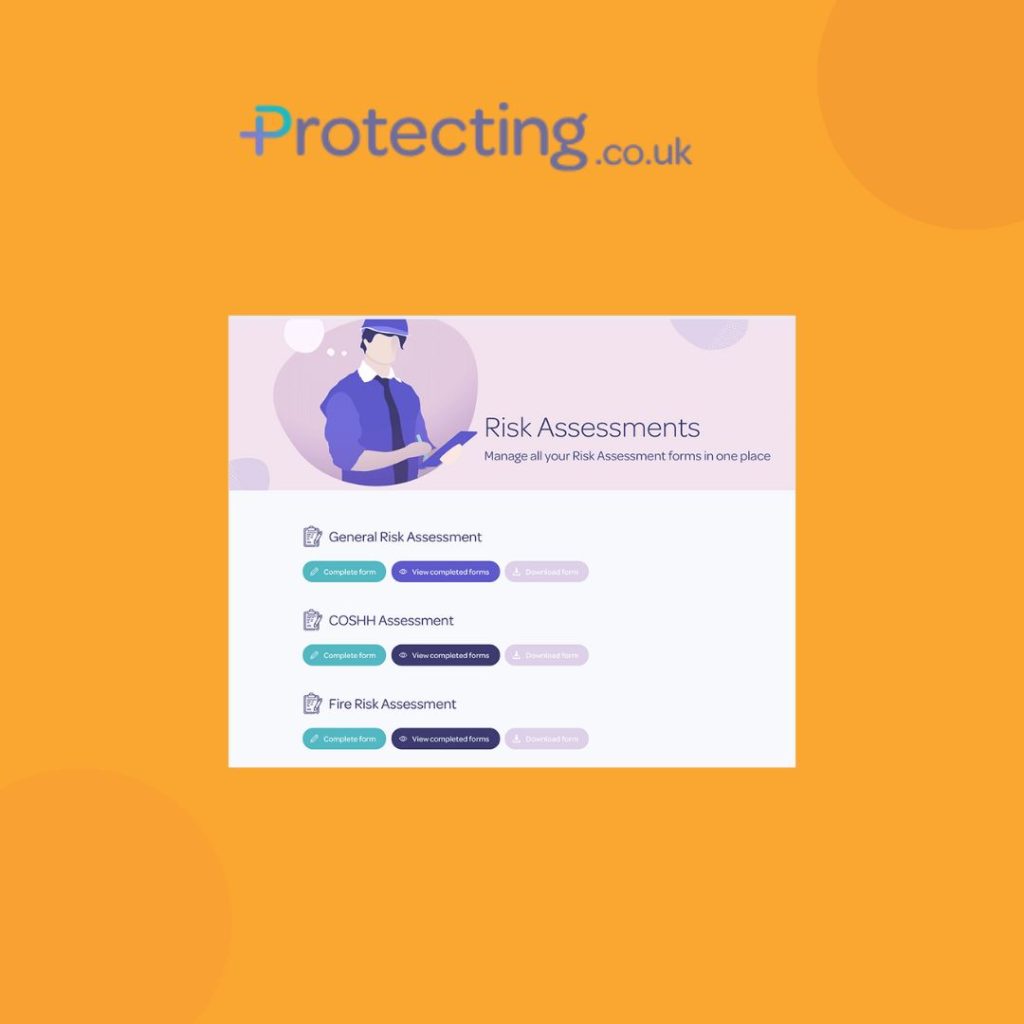
Protecting.co.uk offers a suite of online health and safety management tools tailored for UK businesses. While the platform encompasses various features aimed at streamlining health and safety processes, its overall effectiveness as a comprehensive Environmental, Health, and Safety (EHS) solution is questionable. The platform’s design may necessitate the integration of additional software to manage all aspects of EHS, potentially leading to data silos and duplication. For small and mid-sized enterprises (SMEs) seeking an all-in-one EHS platform, this could present operational challenges.
Core features
Risk assessment software: Provides a step-by-step creator with pre-set templates, allowing users to create unlimited risk assessments. Users can customise documents with their company logo and store them online for easy access.
RAMS software: Enables the creation of risk assessments and method statements online, aiming to save time and ensure compliance with relevant regulations.
COSHH assessment software: Facilitates the creation of Control of Substances Hazardous to Health (COSHH) reports, assisting businesses in managing hazardous substances safely.
Advanced features
Tasks / action plan software: Allows users to create and manage safety action plans, set priorities, completion dates, and add notes for efficient task management.
Training planner: Assists in building training plans and tracking progress with a professional training matrix, aiming to streamline employee development.
Accident and incident reporting: Provides a system to log, track, and manage workplace accidents and incidents in a centralised location.
Constraints and functionality gaps
Despite its range of features, Protecting.co.uk exhibits several notable limitations:
Limited integration capabilities: The platform’s features, while diverse, may not seamlessly integrate with other business systems, potentially leading to data silos and duplication.
Lack of real-time monitoring: The software does not appear to offer real-time hazard monitoring or dynamic risk assessment updates, which are essential for proactive risk management.
Absence of mobile applications: There is no indication of dedicated mobile apps, which could limit accessibility for field workers or remote teams.
Pricing
Protecting.co.uk offers a straightforward pricing model:
Subscription fee: £39 per month, providing unlimited access to all features.
While the flat-rate pricing is transparent, businesses must assess whether the platform’s features align with their specific EHS requirements.
Pros & cons
Pros
- User-friendly interface: The step-by-step creators and pre-set templates make it accessible for users without extensive training.
- Comprehensive document management: Offers tools for creating and storing various health and safety documents, facilitating organisation and compliance.
- Affordable pricing: The flat monthly fee is competitive.
Cons
- Integration challenges: Potential difficulties in integrating with other business systems may lead to inefficiencies.
- Limited advanced features: The absence of real-time monitoring and mobile applications may hinder dynamic risk management and accessibility.
- Potential for data duplication: Without seamless integration, there's a risk of data duplication across systems, leading to inconsistencies.
SHEQAPP
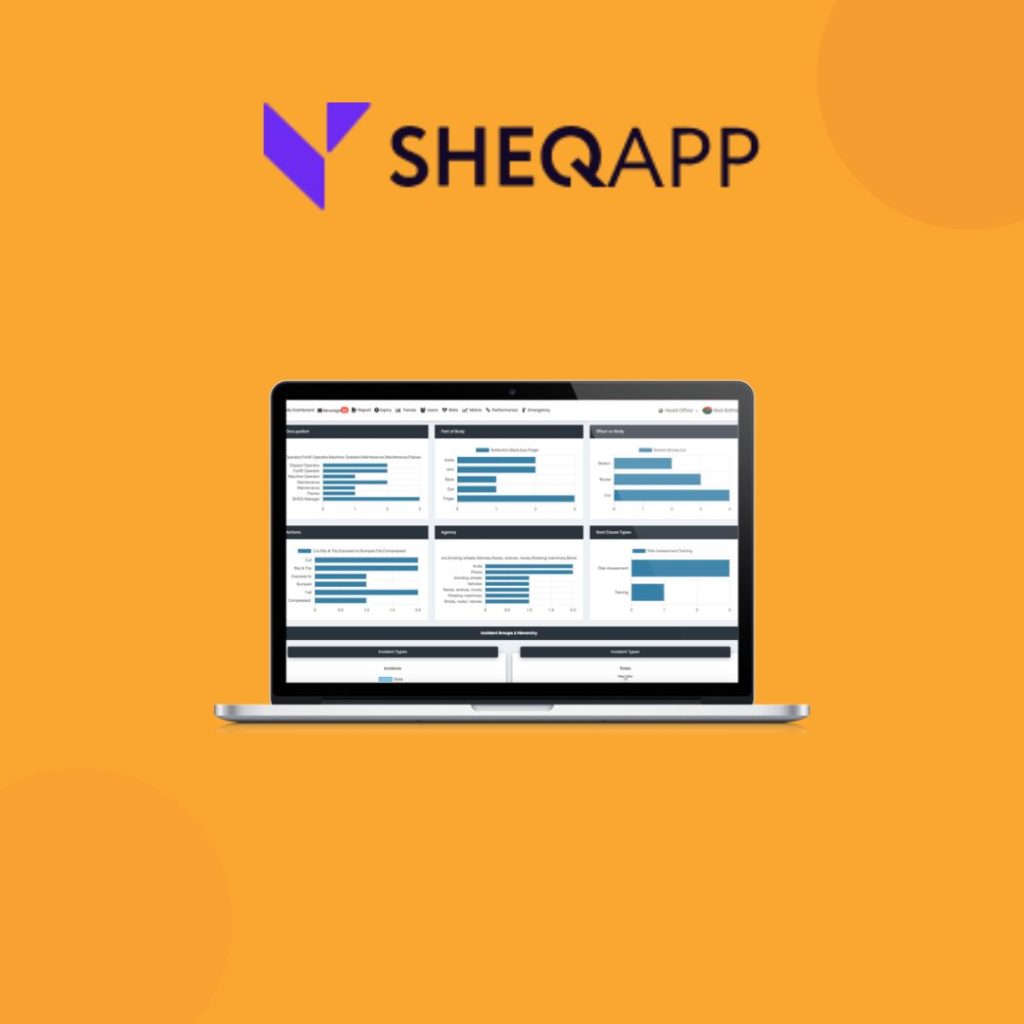
SHEQAPP is an online compliance software designed to monitor Environmental, Health, and Safety (EHS) laws and regulations across over 80 countries, including all European Union directives. While it offers robust compliance monitoring tools, its capabilities in facilitating comprehensive risk assessments for UK businesses appear limited. The platform’s primary focus on legal compliance may necessitate the integration of additional software to manage other EHS activities, potentially leading to data silos and duplication. For small and mid-sized enterprises (SMEs) seeking an all-in-one EHS solution, this could present operational challenges.
Core features
Legal compliance monitoring: SHEQAPP enables businesses to establish a legal register encompassing national and regional EHS legislations, providing notifications and summaries of amendments to ensure ongoing compliance.
Compliance checks: The platform facilitates compliance assessments on legal registers, allowing delegation to responsible managers across specific areas or sites.
Advanced features
Global coverage: SHEQAPP monitors EHS laws and regulations for over 80 countries, including all EU regulations and directives, offering a broad scope for multinational organisations.
Customisable legal registers: Businesses can tailor their legal registers to match specific organisational needs, providing a comprehensive overview with columns for comments and links to routines or control documents.
Constraints and functionality gaps
Despite its strengths in compliance monitoring, SHEQAPP exhibits several notable limitations:
Limited risk assessment functionality: The platform does not offer dedicated tools for creating, managing, or analysing risk assessments, a critical component of EHS management for UK businesses.
Absence of incident management tools: SHEQAPP lacks features for reporting and tracking workplace incidents or accidents, necessitating supplementary software for comprehensive incident management.
No mobile application: The platform does not provide a mobile app, which could limit accessibility for field workers or remote teams requiring on-the-go access to compliance information.
Pricing
SHEQAPP’s pricing starts at €199 per month per jurisdiction, granting access to national and regional legislations, unlimited users, compliance functions, and legal registers. Businesses must specify their jurisdictions of interest when requesting a quotation.
Pros & cons
Pros
- Comprehensive compliance monitoring: Offers extensive coverage of EHS legislations across multiple countries, beneficial for multinational organisations.
- Customisable legal registers: Allows tailoring of compliance documentation to align with specific organisational requirements.
- Automated notifications: Provides timely alerts on legislative changes, aiding in proactive compliance management.
Cons
- Lack of risk assessment tools: Does not support the creation or management of risk assessments, a fundamental aspect of EHS management.
- No incident reporting features: Absence of tools for logging and tracking workplace incidents or near-misses.
- Potential integration challenges: May require additional software to achieve a comprehensive EHS management system, potentially leading to data silos and increased complexity.
BrightSafe
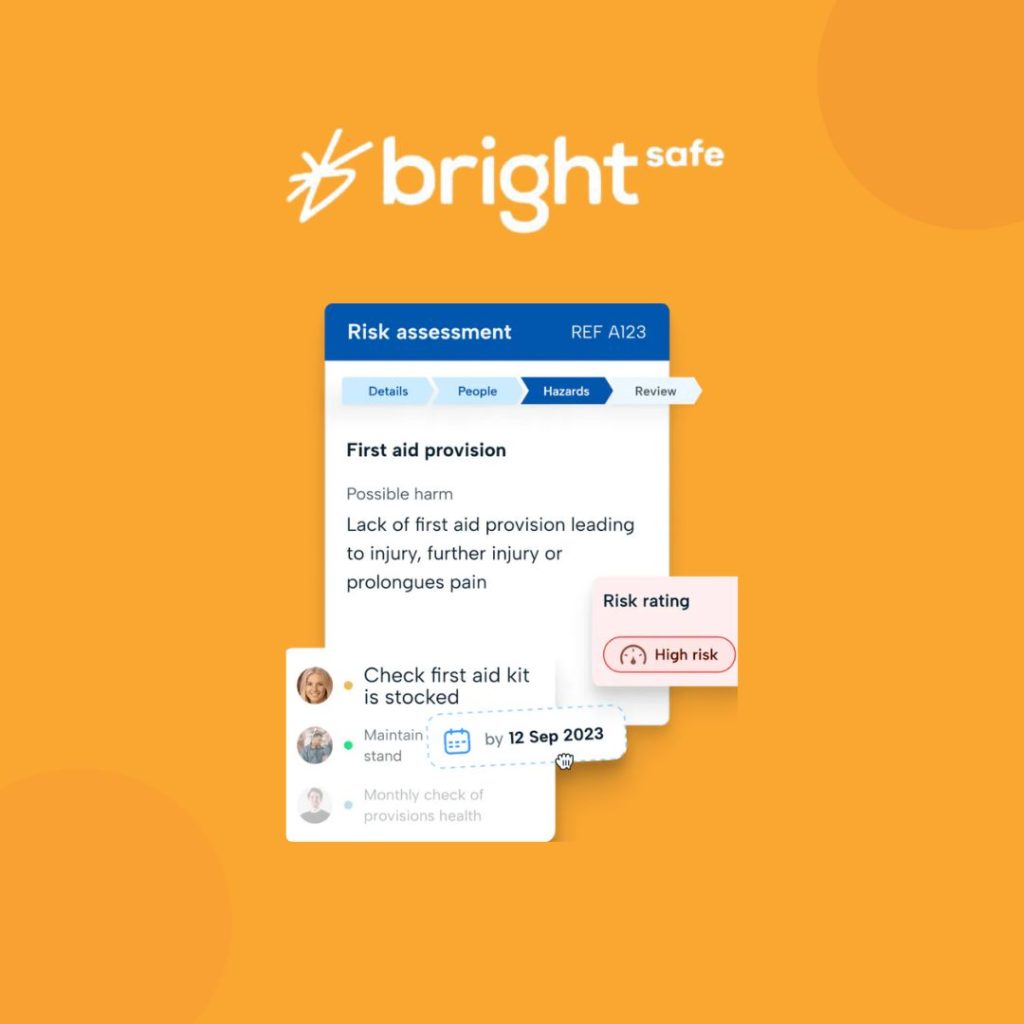
BrightSafe is a cloud-based health and safety management software tailored for UK small and medium-sized enterprises (SMEs). While it offers a range of features aimed at simplifying health and safety processes, its capabilities, particularly in risk assessment, may not fully meet the comprehensive needs of businesses seeking an all-in-one Environmental, Health, and Safety (EHS) platform. The platform’s limitations could necessitate the integration of additional software to manage other health and safety activities, potentially leading to data silos and duplication.
Core features
Risk assessment management: BrightSafe provides built-in templates that allow teams to create and manage risk assessments in compliance with Health, Safety, and Environment (HSE) standards.
Incident reporting: The platform enables managers to identify workplace hazards and report incidents or accidents with on-site images in real-time.
E-learning courses: BrightSafe offers CPD-accredited e-learning courses on various topics, including display screen equipment and fire safety awareness, facilitating staff training and development.
Advanced features
Mobile accessibility: BrightSafe provides free iOS and Android mobile applications, allowing users to manage health and safety tasks on the move and record workplace hazards in real-time.
Task management: The platform allows businesses to delegate work orders among team members, set up job task reminders, and maintain official records using the responsibility manager module.
Constraints and functionality gaps
Despite its user-friendly interface and range of features, BrightSafe exhibits several notable limitations:
Basic risk assessment features: While the platform offers risk assessment templates, the functionality is somewhat basic and may not cater to businesses requiring more detailed and customised risk evaluations.
Limited customisation and AI capabilities: BrightSafe lacks advanced customisation options and artificial intelligence features that could enhance risk analysis through predictive insights and automation.
Potential integration challenges: The platform may not encompass all aspects of EHS management, leading to potential integration issues with other software solutions and risking data silos and duplication.
Pricing
BrightSafe operates on a subscription-based pricing model, starting at £9.00 per month. However, it does not offer a free version or a free trial, which may deter businesses looking to evaluate the software before committing.
Pros & cons
Pros
- User-friendly interface: BrightSafe's intuitive design simplifies the creation and management of health and safety tasks, making it accessible for users with varying levels of technical proficiency.
- Mobile accessibility: The availability of mobile applications enhances the platform's utility for organisations with field operations, allowing for real-time hazard reporting and task management.
- Comprehensive e-learning resources: The inclusion of CPD-accredited courses supports ongoing staff training and development in health and safety practices.
Cons
- Basic risk assessment functionality: The platform's risk assessment features may not meet the needs of businesses requiring more detailed and customisable evaluations.
- Limited advanced features: The absence of advanced customisation and AI capabilities may hinder proactive risk management efforts.
- Potential integration issues: Businesses may need to integrate BrightSafe with other software to achieve full EHS compliance, potentially leading to data silos and increased complexity.
Overview of the 8 Best Risk Assessment Software for 2025
Comprehensive EHS Platforms (Best for Mid-to-Large Organisations)
These systems combine risk assessment with wider safety, compliance, and audit functions. They’re strong on features but often complex and priced for larger organisations.
Evalu-8 EHS: Scales from SMEs to enterprise. Links risk assessments directly with RAMS, incident reporting, audits, fatigue management, and compliance dashboards. A UK-focused system that balances power and usability.
Notify Technology: Provides enterprise-grade EHS tools, including risk assessments, incident reporting, and analytics. Strong but more complex than most SMEs need.
Safesmart: Offers health & safety, compliance, and risk modules aimed at mid-sized and large businesses. Comprehensive but heavier on cost and implementation.
Integrated & Flexible Solutions (Small-to-Midsize Businesses)
These platforms offer a balance of robust risk assessment tools, affordability, and usability. Perfect for SMEs that need compliance without enterprise overheads.
Evalu-8 EHS: Modular pricing means SMEs can start with risk assessments and add features like audits, RAMS, and fatigue management as they grow. Designed specifically with UK compliance in mind.
BrightSafe: Part of Peninsula Group, offering risk assessments and safety support services. Accessible for SMEs but less flexible than modular platforms like Evalu-8.
SHEQAPP: Mobile-friendly safety app covering risk assessments and audits. Simple to use but less comprehensive than broader platforms.
Specialist & Simpler Risk Tools
These tools focus on digitising risk assessments and RAMS with speed and simplicity, best for SMEs that want to move away from spreadsheets or paper forms.
Evalu-8 EHS: Provides drag-and-drop risk assessments with severity/likelihood scoring, risk matrices, and automated control tracking. Unlike pure checklist tools, links directly to audits, incidents, and corrective actions.
Protecting.co.uk: Aimed at small businesses needing straightforward online risk assessments. Quick and affordable, but limited in advanced safety features.
RiskPal: Built with creative and media industries in mind, offering project-based risk assessments. Niche focus means it lacks broader EHS coverage.
RAMS App: Designed to produce risk assessments and method statements quickly. Good for contractors but doesn’t offer integrated compliance or incident tools.
How to Choose the Best Risk Assessment Software
Assess Your Needs: Do you just need simple online templates, or a platform that connects risk with incidents, audits, and compliance? Evalu-8 EHS uniquely covers both.
Consider Business Size: SMEs may prefer simple apps, while larger organisations need enterprise oversight and analytics. Evalu-8 bridges both ends with modular scalability.
Evaluate Features: Look for risk scoring, control tracking, risk matrices, and links to RAMS or incident management. Evalu-8 delivers all as standard.
Check Pricing & Scalability: Make sure the platform fits your budget today but can grow with your business. Evalu-8 ensures you only pay for what you need, with the ability to expand as compliance demands increase.
How I Chose the 8 Best Risk Assessment Software of 2025
First, I narrowed down the must-haves
Customisable risk assessment templates that can adapt to different industries and hazards
Ability to score risks based on severity and likelihood, with clear risk matrices
Simple controls to log hazards, assign responsibilities, and track outcomes
Easy export or reporting to demonstrate compliance during audits
Usable on desktop and mobile, so staff can complete assessments in the field
Then, I considered the practical things that make these tools usable every day
Intuitive interfaces that don’t require specialist training
Pricing models that work for SMEs, not just enterprise budgets
Fast setup with minimal IT requirements or long implementation projects
Real-time dashboards so managers can monitor risk assessments without digging into spreadsheets
Mobile apps with offline capability for work in remote sites or on the move
Finally, I looked for advanced features that separate the good from the great
Integrated risk registers for ongoing monitoring and trend analysis
Linking risk assessments to RAMS, incidents, or audits for a full compliance picture
Corrective action management with reminders and escalation workflows
Alignment with UK compliance requirements (HSE, ISO standards, GDPR)
Scalability the ability to start simple but grow into advanced risk and compliance management as business needs increase
Why Evalu-8 EHS came out on top
Evalu-8 EHS stood out because it isn’t just a digital form tool, it’s a full risk management system. Businesses can build risk assessments with severity/likelihood scoring, generate RAMS automatically, and connect findings directly to audits, incidents, and corrective actions. Its modular pricing means SMEs only pay for what they need, but the platform can scale to enterprise-level compliance without forcing a switch later. For UK businesses that need both usability and depth, Evalu-8 EHS is the clear winner.
Final Thoughts
Risk assessment software comes in many forms, from simple online templates to enterprise-grade compliance platforms. The right choice depends on your size, industry, and compliance priorities. Some tools focus on speed and simplicity, while others deliver powerful compliance oversight. The goal is the same: making risk assessments meaningful, manageable, and effective. For UK SMEs that want an affordable, practical, and scalable solution, Evalu-8 EHS delivers the strongest all-round option.
Want to learn more about Evalu-8 EHS?
FAQs about risk assessment software
Risk assessment software helps businesses identify, evaluate, and mitigate workplace hazards. It automates risk scoring, compliance tracking, and reporting, reducing manual effort while ensuring compliance with UK health and safety regulations.
Why you need it:
- Saves time by automating assessments
- Reduces legal risks and improves compliance
- Creates a safer work environment for employees
- Helps businesses manage incident prevention strategies
When choosing risk assessment software, consider:
- Customisable risk templates tailored to your industry
- Automated risk scoring & prioritisation for high-risk tasks
- Integration with COSHH & RAMS for full safety compliance
- Mobile accessibility for on-site assessments
- Real-time risk monitoring & dynamic updates
Evalu-8 EHS offers all these features, plus incident tracking, automated alerts, and compliance reporting in one system.
Yes! Risk assessment software ensures compliance with UK health and safety laws by:
- Keeping risk assessments up to date
- Providing audit trails for inspections and safety reviews
- Tracking compliance with COSHH, RAMS, and regulatory standards
- Generating reports required for audits and legal documentation
Evalu-8 EHS automates compliance tasks, helping businesses stay legally compliant with minimal effort.
Pricing varies based on:
- Number of users
- Features included (e.g., COSHH integration, incident reporting)
- Level of automation and reporting tools
Some basic risk assessment tools start from £9 per month (BrightSafe), while advanced EHS platforms like Evalu-8 EHS offer custom pricing for comprehensive risk management and compliance solutions.
Evalu-8 EHS provides tailored pricing based on business needs—contact for a free quote!
Absolutely! Unlike some complex enterprise-level EHS systems, Evalu-8 EHS is designed for businesses of all sizes, offering:
- Easy-to-use risk assessment tools
- Scalable pricing that grows with your business
- All-in-one platform, reducing the need for multiple safety tools
- Mobile-friendly access for on-site assessments
Small and mid-sized businesses choose Evalu-8 EHS for its enterprise-level safety features at an affordable cost.
